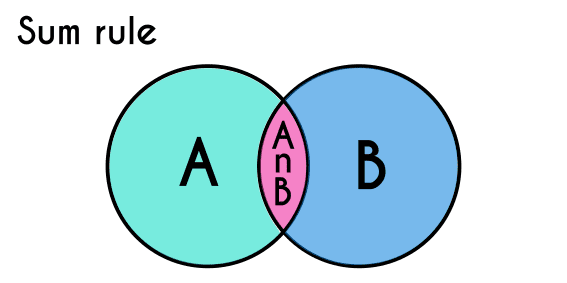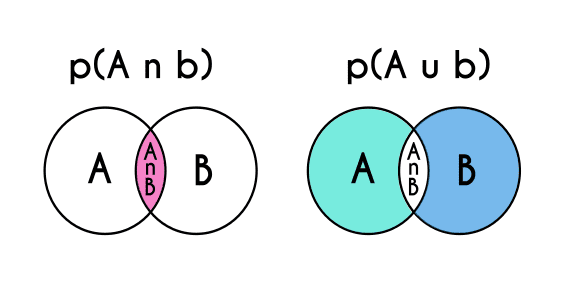The Sum Rule in probability with Examples
This article will be about What is the sum rule, how to use it and apply it correctly, with the formula and examples.
Definition of the sum rule
The sum rule is a statistical method that is used to calculate a compound probability it is considered a compound probability when two outcomes are put together in order to form only one, knowing this the sum rule is used when we want to know what is the probability that two or more outcomes happen, either at the same time or only one of them.
To learn how to apply the sum rule, first we have to understand the notation that most of the problems are written, at first it could be a little difficult to understand but when we pay attention it will be a lot easier to understand.

Basic concepts to solve sum rule problems
The probabilities are always written of the following way: p(a) where “p” is the probability and “a” is one of the possibles events, for example, when we flip a coin there are two different events in the sample space that are heads and tails, to differentiate this we could call the heads event p(h) and call the tails event p(t) (and there is actually a third event and it is when the coin lands on it´s edge, the probability of this to happen is really small, some studies indicates that the probability of this to happen is 1 over 6000 in perfect conditions, but that is not the case this time).
Now that we understood the probability notation we can proceed to the sum rule.
First we have to understand the difference between “and” and “or”. We use “and” when it comes to two events happening at the same time, for example “it´s hot and it is raining” this sentence is indicating that it is hot at the same time that rains, but the sentence “it is cold or it is hot” means that it either is hot or cold, but never both at the same time.
In the sum rule we use the same language but written of a different way, when we write p(a n b) it means the probability of “a and b” but when we write p(a u b) it means the probability of a or b. We can also call to (a n b) "a intersection b" and we can call (a u b) "a union b"

Formulas of the sum rule
To use the sum rule correctly first we need to calculate the probabilities of the outcomes individually, and when we already have this probabilities we are going to use the following formula.
- Formula of the sum rule
- p(aub) = p(a) + p(b) - p(anb)
Examples of the sum rule
Example 1: In a room there are 20 people, where we know that half of them are over 30 years old, if we know that there are 7 Mexicans of which 5 are over 30, if somebody chooses one person randomly ¿What are the chances that the selected person is either Mexican or over 30?
p(m) = mexican, p(o) = over 30, p(m n o) = mexican and over 30.
- First we calculate each probability.
- p(m) = 7 / 20
- 0.35
- p(o) = 10 / 20
- 0.5
- p(m n o) = 5 / 20
- 0.25
- Now we find p(m u o) = mexican or over 30.
- p(m u o) = 0.35 + 0.5 - 0.25
- p(m u o) = 0.6 * 100%
- p(m u o) = 60%
Example 2: In a store they sell green and red chairs, if there are 16 chairs (8 reds and 8 greens) to choose but there are 10 made off wood and 6 made of plastic and we know that out of the 6 of plastic 5 are green ¿What are the chances of randomly picking one that is either made of plastic or green?
p(g) = green, p(p) = plastic, p(g n p)= green and plastic
- We find every probability
- p(g) = 8 / 16
- 0.5
- p(p) = 6 / 16
- 0.375
- p(g n p) = 5 / 16
- 0.3125
- And we find p(g u p)
- p(g u p) = 0.5 + 0.375 - 0.3125
- p(g u p) = 0.5625 * 100%
- p(g u p) = 56.25%
Example 3: There's is a vending machine of drinks, it has 50 drinks and every time it is used it throws out a random one, if we know that inside the vending machine there are 25 black drinks and we also know that 40 drinks are cold and out of this 40 20 are black drinks ¿What are the chances that when we use this machine the drink is either cold or black?
p(b)=black drink, p(c) = cold drink, p(b n c) = black and cold drink.
- First we find the probabilities separately.
- p(b) = 25 / 50
- 0.5
- p(c) = 40 / 50
- 0.8
- p(b n c) = 20 / 50
- 0.4
- then we find p(b u c)
- p(b u c) = 0.5 + 0.8 - 0.4
- p(b u c) = 0.9 * 100%
- p(b u c) = 90%